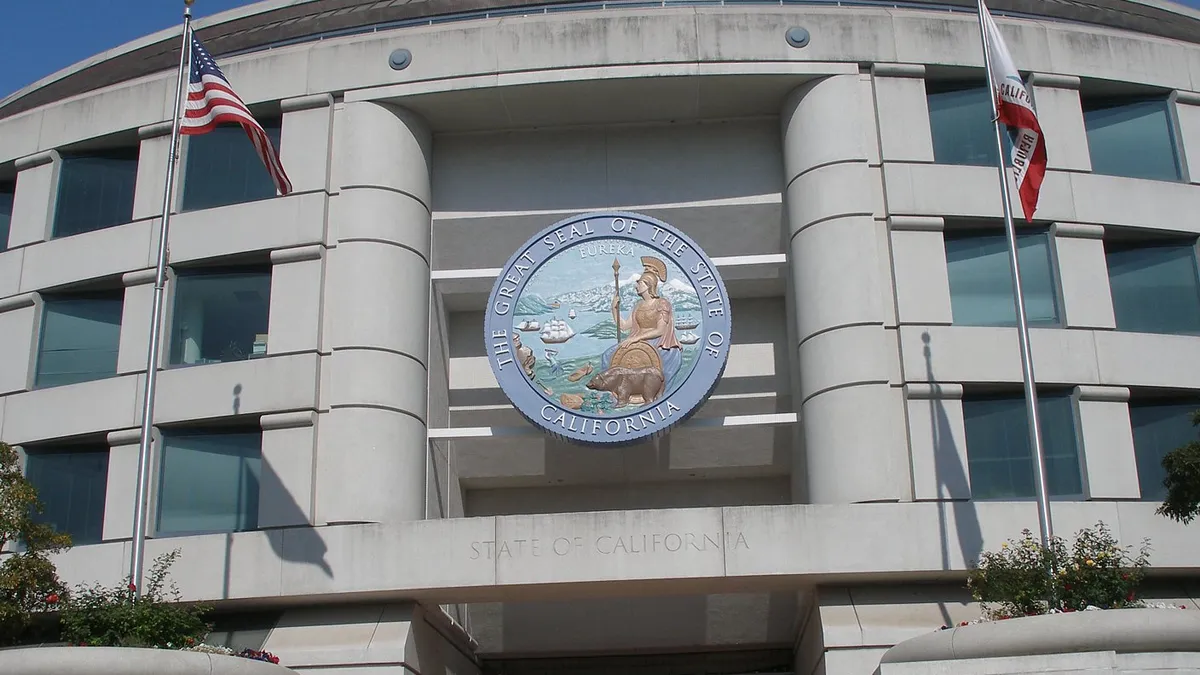Dive Brief:
- The California Public Utilities Commission published a proposed order on Monday directing load serving entities (LSEs) to procure 4 GW of capacity beyond baseline resources already set for 2022, in order to meet a potential resource adequacy shortage beginning in 2021.
- Regulators could vote Nov. 7, with 60% of the resources required to come online by August 2021 and 100% required two years later.
- The proposed order also approves compliance extensions necessary to keep once-through cooling units online, a move regulators say is necessary to ensure system reliability. The commission's procurement proceeding is part of an effort to overhaul utility integrated resource planning, as load growth has shifted to community aggregation and other LSEs.
Dive Insight:
California regulators say they remain committed to compliance with new once-through-cooling (OTC) regulations that would stop power plants from discharging hot water into the ocean, but will need to push back deadlines in order to keep some facilities online.
The order recommends the California State Water Resources Control Board extend OTC compliance deadlines for certain units currently slated to retire by the end of 2020, including:
- Three units at the Alamitos Generating Station totaling approximately 1,200 MW, for up to three years;
- The 200 MW unit 2 at Huntington Beach Generating Station, for up to three years;
- Three units at Redondo Beach Generating Station totaling approximately 850 MW, for up to two years; and
- Two units at the Ormond Beach Generating Station totaling approximately 1,500 MW, for up to one year.
The order also requests a temporary extension for the Moss Landing facility to meet its obligations under
the OTC requirements, though that would not make additional capacity available.
"These requests are to ensure electric system reliability with the expectation that these OTC units will have low capacity factors, and therefore low emissions and low use of seawater for cooling," according to the proposed order. "The commission remains committed to OTC compliance."
The proposal would also require incremental procurement by all LSEs serving load within the California ISO balancing authority area. The procurement would be conducted on an all-source basis, including both
existing and new resources, and "may include LSE-owned resources when justified."
The state's investor-owned utilities would present proposed contracts to the commission in a Tier 3 advice letter, with other LSEs providing summaries of their resource procurements.That filing would be accompanied by an attestation from a senior officer that they will meet the electric capacity requirements.
If the order is approved, LSEs would need to provide the commission with an activity progress report by Feb. 15, 2020, and would also be required to include updated contractual data in their 2020 IRP filings.
A previous decision recommended LSEs procure 2 GW of new peak capacity statewide, but the commission has scaled back proposed OTC extensions which led to this week's larger proposed procurement.
The commission's draft order offers a nod to the adjusted levels, noting: "procurement of resources is not an exact science."















